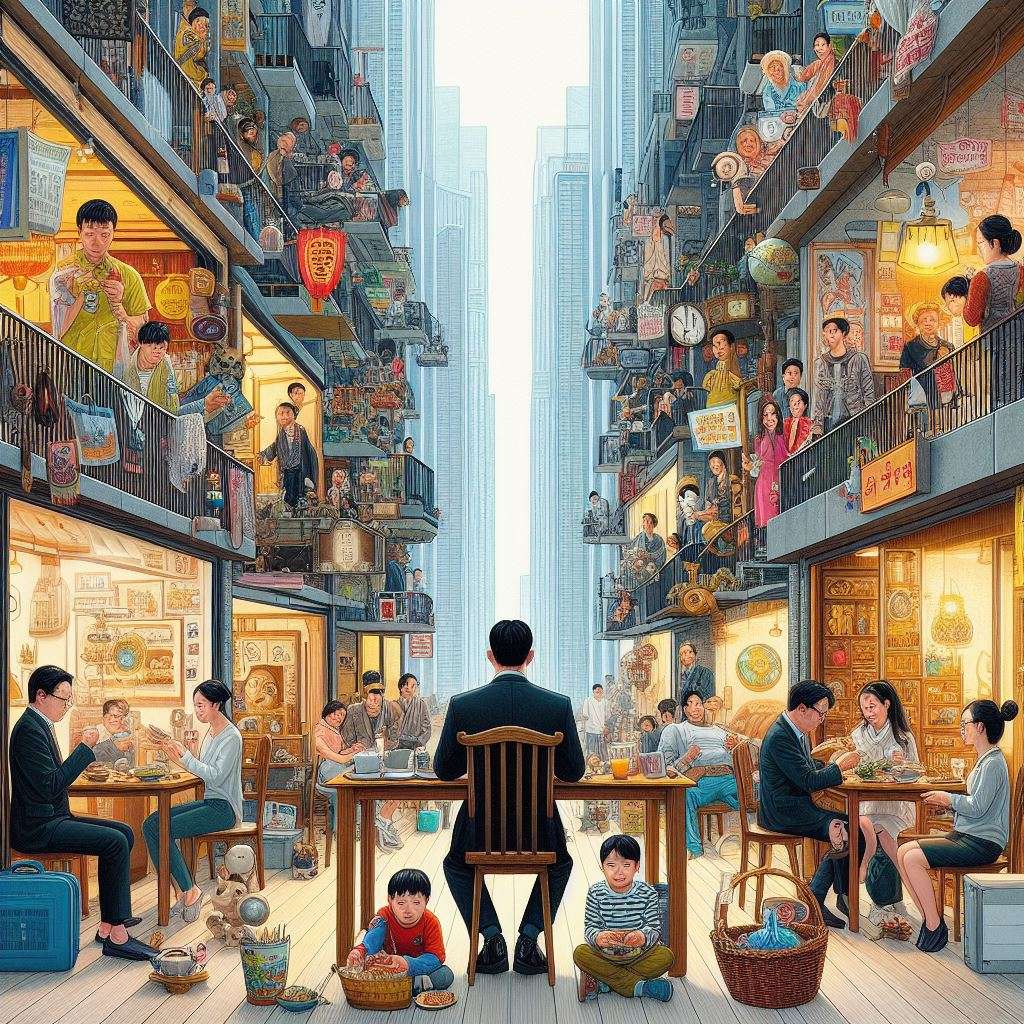
Historical Context of the Korean Family Structure
- Confucian Influence: Historically, Korean society was heavily influenced by Confucian values, which emphasized filial piety, respect for elders, and a patriarchal family structure. The traditional family, often extended, was seen as the fundamental unit of society.
- Post-War Changes: The Korean War and the subsequent industrial revolution brought significant changes. Urbanization led to smaller family units, and economic development shifted the focus from collective family welfare to individual success.
Current Trends in Korean Family Dynamics
- Declining Birth Rates: South Korea has one of the lowest birth rates in the world. The reasons are multifaceted, including economic challenges, high education and housing costs, and changing attitudes towards marriage and child-rearing.
- Changing Marital Patterns: There’s a noticeable shift in marital patterns. Late marriages are becoming more common, and an increasing number of individuals are choosing to remain single, often due to personal preferences and economic reasons.
- Rise of Nuclear Families: The traditional extended family is giving way to nuclear families. This shift is influenced by the desire for privacy, mobility, and the increasing participation of women in the workforce.
- Single-Parent Families and Reconstituted Families: The rise in divorce rates and the growing acceptance of remarriage have led to an increase in single-parent families and reconstituted families, which include stepparents and stepchildren.
Societal Implications
- Aging Population: With fewer children being born and a growing elderly population, Korea faces a demographic challenge. The burden of elderly care, traditionally managed within the family, is becoming a social issue.
- Economic Impact: The declining youth population could lead to a shortage in the workforce, impacting the economy. It also raises concerns about the sustainability of the pension system and healthcare services for the elderly.
- Changing Gender Roles: Women’s increasing participation in the workforce is challenging traditional gender roles. There’s a growing demand for more equitable distribution of domestic responsibilities and childcare.
- Social Policy Reforms: The government is responding with policies aimed at supporting families, such as improved childcare services, incentives for having more children, and support for single parents.
Cultural Responses
- Media Representation: Korean media, including K-dramas and films, are increasingly portraying diverse family structures, reflecting the societal changes and sometimes challenging traditional norms.
- Shift in Educational Values: There’s a gradual shift from the traditional emphasis on academic success to a broader view of education, including emotional intelligence and life skills, reflecting changes in family dynamics.
Global Comparisons
- Similar Trends in Other Countries: Korea is not alone in experiencing these changes. Many developed countries are facing similar challenges with declining birth rates and changing family structures.
- Cultural Exchange: The global exposure to different family models, through media and cultural exchange, is also influencing perceptions in Korea, leading to a more inclusive understanding of what constitutes a family.
Conclusion
The transformation of the family structure in Korea is a multifaceted issue that reflects broader social, economic, and cultural shifts. While it poses challenges, it also opens up opportunities for a more flexible and diverse understanding of family. The response to these changes, both at the policy level and within the society, will shape the future of Korean family dynamics.
Understanding these nuances is crucial for anyone seeking to comprehend the current and future landscape of Korean society. It’s a story of adaptation, resilience, and transformation, mirroring the nation’s rapid economic and social evolution.
A Glimpse into Korea’s Future: Addressing the Shrinking Young Population
Hi, I’m [jeybee]. As a long-time resident of Seoul, I’m passionate about uncovering the authentic, everyday magic of Korea. This blog is my way of sharing my favorite spots, tips, and cultural insights with you, beyond the usual tourist traps.

